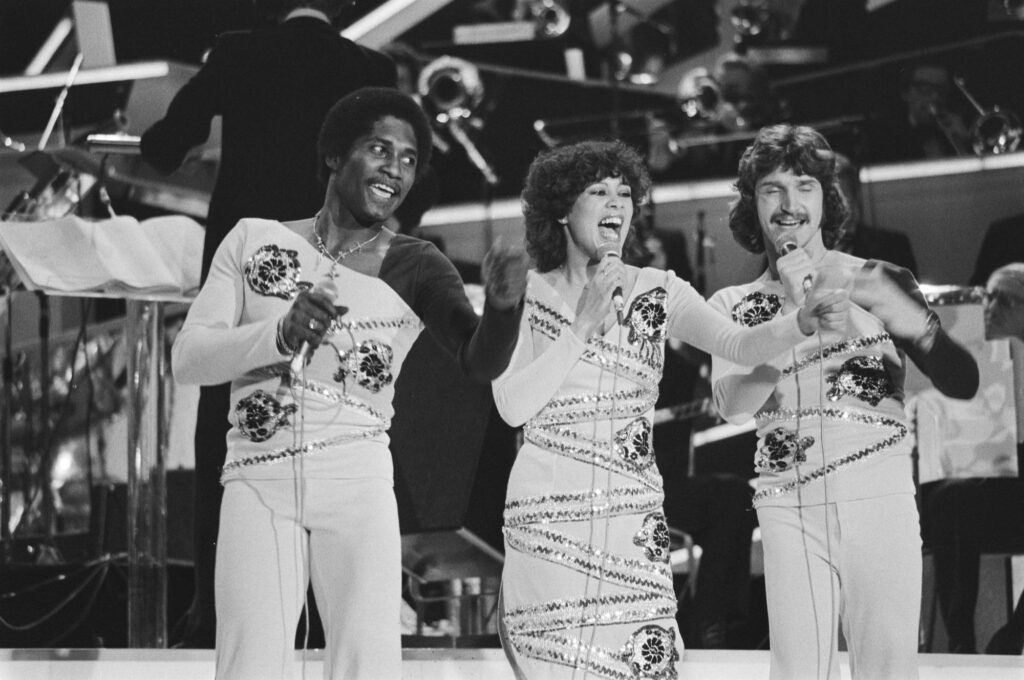In the fall of 1965, life should have been grand for 42-year-old Dorothy Dandridge. Earlier in her life, she had become the first African American to be nominated for a Best Actress Academy Award (Carmen Jones in 1954). She had once been a headliner in places like The Cotton Club and at the Apollo Theater. She was the first African American featured on teh cover of Time Magazine. Just a few years prior she received much acclaim on the Broadway stage for the shows Porgy and Bess and West Side Story.
But, somehow, something wasn’t quite right.
Introducing Dorothy Dandridge
Dorothy was born on November 9, 1922, in Cleveland, Ohio. Her father was a preacher, although he left the family shortly before Dorothy was born. Her mother, Ruby was a rather popular nightclub performer, ultimately making her way into radio shows.
It was fairly clear that the Dandridge family (also including Dorothy’s older sister Vivian) was destined for stardom. While some members of the family (such as Ruby) may not have had the greatest talent, they certainly made up for it in personality.
As The Wonder Children, then later as The Dandridge Sisters, the sisters would travel doing shows all over the southeastern US, at least until the depression made things a bit difficult. Yet, they persisted and earned a reputation that ultimately led to gigs in some of New York City’s most notable clubs.
In 1940, Dorothy Dandridge appeared in her first film, Four Shall Die, a supernatural crime thriller and “race film”. Dorothy was cast as a murderer, and a rather unlikable character, so this did little for her career – a fact that was hard for her to ignore.
Early in her life and career, Dorothy had met with standout praise. Even when she was singing with The Dandridge Sisters, it was clear that she was on the fast track to stardom. Yet, when she became too big a draw for the family shows, there didn’t seem to be much animosity or jealousy from the various members of the family.
After her technical success in that first film, movie roles started to be offered, but Dorothy felt that the roles she was being asked to play were not exactly what she wanted. She refused to play another murderer, or otherwise unlikable character. Beyond that, several of the roles she was being offered was playing a slave – something she had absolutely no interest in ever doing.
While most of the roles she did accept were smaller roles, usually something akin to a glorified extra as a “lounge singer” or “featured chorus girl”, in 1954 she would finally be offered the role that would cement her place on the big screen, even if it might not have turned out the way she wanted.
The Highlights and Lowlights of Dorothy Dandridge
In the film Carmen Jones, Dorothy appeared as the titular character in a film that some claimed was perfect for her to showcase her acting and singing abilities. The problem, it seems, was the director, Otto Preminger, who wanted the music to be sung by a more operatically trained voice.
In fact, the role had first been offered to Eartha Kitt (during the height of her popularity) who was eager to play the role until she learned that her singing would be dubbed, so she turned the role down. Another actress was offered the role, who likewise said no before Dorothy Dandridge was offered the role. When she initially signed on, a somewhat well known black opera singer named Leontyne Price had been hired to dub the vocals, but ultimately had to drop out. Eventually a white singer, Marilyn Morne was hired.
For the 27th Academy Awards, Dorothy was nominated for the Best Actress award, and she was up against some fierce competition. Like Judy Garland for A Star is Born, Audrey Hepburn for Sabrina, Jane Wyman for Magnificent Obsession, although the award went to Grace Kelly for The Country Girl.
(Juat as a side note: it would be another 50 years before a black actress would actually win an Academy Award for Best Actress. That honor went to Halle Berry (Monster’s Ball) who two years earlier had played Dorothy in the made-for-television movie Introducing Dorothy Dandridge playing Dorothy. Coincidence? I’ll let you decide. One more fact to muddy the waters: Halle Berry was born in the same Cleveland hospital that Dorothy was.)
Controversy followed another of Dorothy’s films, Island in the Sun, a film in which she played an Indian woman who fell in love with a white man. While her casting as an East Asian did stir the pot a bit, the big problem was that this film was made during the Hollywood Production Code years, during which it was prohibited to depict an interracial relationship.
A similar issue was faced in her film Tamango in which her character entered into a romance with an Italian guy, and they even shared a kiss.
Yet, for Dorothy, that wasn’t the problem. For her, she wanted to maintain a bit of decency. The original script called for a nude swimming scene that she ultimately refused to shoot. She also took umbridge with the costume they tried to force her to wear, a two-piece bathing suit in tatters. Instead, she worked with the costume designer to produce a costume that kept most everyone moderately happy.
(Just as a side note: Dorothy Dandridge also can sometimes be cited in discussions of The Mandella Effect, a phenomenon in which many people seem to share a false memory. Many people claim that Dorothy was involved with one of the first interracial kisses in Hollywood History for her film Malaga, in which she shared some hot and steamy chemistry with her costar Trevor Howard. However, the two characters never actually kissed.)
I think it is safe to say that Dorothy’s personal life was a bit of a chaotic mess. In 1942, she married Harold Nicholas who all but refused to allow her to keep acting (er, working). She, though, seemed willing to work on family life, until she discovered that her husband was having affairs with other women, so that relationship wasn’t bound to last.
Shortly before filming began on Carmen Jones, she began to have a four-year affair with the director (and producer) Otto Preminger. As we would later become all too aware, many Hollywood elites were less than stellar people. He was believed to have had romances with many young ladies in Hollywood, was verbally and emotionally abusive toward Dorothy (among others).
When she became pregnant with Otto’s child, The Studio (the same one that was also forcing Judy Garland to take drugs) forced her to have an abortion. This decision nearly broke her, although it did end the relationship she had with Preminger.
Perhaps the biggest problem she faced came from mistakenly trusting the wrong financial managers. Hers stole $150,000 (which in today’s money would be … holy cow) from her directly, but also didn’t file her taxes correctly leaving her with a $139,000 back taxes bill and let’s just say that the IRS wasn’t all that kind to any black people, especially those in the public eye, who owned them money.
Some say that it was this latest development that ultimately led to her death.
The End of Dorothy Dandridge
On September 8th, 1965, as Dorothy was getting ready for a trip to New York to appear at some clubs there, she telephoned a friend of hers who would later comment on one strange aspect of that call. “Whatever happens, I know you will understand,” was the cryptic statement from Dorothy. Later that evening, she was found dead in her apartment at the age of 42.
According to some sources, Dorothy died as the result of an embolism from a minor foot injury she had suffered the previous week.
According to others, she died as the result of an overdose of the antidepressant Imipramine.
And, if that was the case – was it an accidental overdose, or something more intentional? Or, was it possible someone was with her and forced her to take it?
That is something we may never know.
At that time in American History, the war between the races was at a horrific strong point, and anyone and everyone in the public eye was a frequent target, including Dorothy herself. Being that much in debt to the IRS didn’t help the matter much, and many of the tactics used by the IRS wouldn’t exactly be legal today. In fact, there are those who speculate that an agent for the IRS was with her that day and forced the pills upon her, which they later tried to cover up.
Another theory comes from the movie studios, which were slowly in the process of changing. This was the time when the old “Hayes Code” was out, a system that had frequently been used to attack Dandridge. Dorothy’s unwillingness to (sometimes) bend her will to the Code left some in Hollywood (especially among the more elite) with a bad taste in their mouths. Is it possible that it was them, and not the IRS, that came after her that fateful day?
Sadly, we may never know what happened between that phone call and the time she was discovered dead.
Dorothy would be laid to rest at the Forest Lawn Memorial Park in Glendale, California. While her life took her elsewhere, she always remembered her Ohio roots and still somehow managed to keep a bond with the city she was from.



